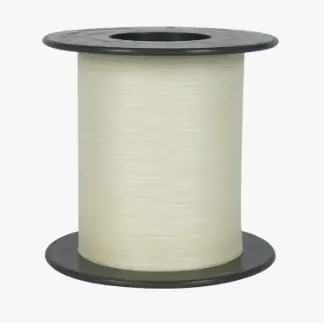As a fiber material that is both decorative and technical, Metallic Yarn is gradually occupying an important position in the textile industry with its unique luster and excellent performance. From the shining details of high-end fashion to the technological application of functional fabrics, the charm of Metallic Yarn is not limited to visual impact, but also lies in its diverse application value and potential for future development.
The essence and structure of metallic yarn
Metallic Yarn is not a yarn made of metal alone. It is usually composed of a very thin metal film (such as aluminum, silver or copper) covering the surface of synthetic fibers such as polyester and nylon, and a composite yarn with metallic luster is formed through evaporation, lamination or coating. This structure retains the visual effect of metal while maintaining the flexibility and processability of textiles.
According to different manufacturing methods, Metallic Yarn can be divided into MS (Metallic Slit Yarn), MT (Metallic Twisted Yarn) and MH (Metallic Heat Transfer Yarn). Different types of metallic yarns have different gloss, touch, durability and cost, meeting the needs of different levels and uses.
When it comes to Metallic Yarn, many people first think of its decorative use in clothing design. Indeed, in high-end custom clothing, dresses, stage costumes and even sports fashion, Metallic Yarn is often used to create a shining visual effect. Designers use metallic yarns to blend or embellish ordinary yarns, making the clothes shine under the lights, full of futuristic and technological sense.
But the value of Metallic Yarn is far more than that. In home textiles, it is widely used in curtains, sofa fabrics, tablecloths and other fields, which not only enhances the decorativeness, but also enhances durability and stain resistance. In addition, with the development of functional fibers, metal yarns are also used in high-tech fabrics such as antibacterial, conductive, and radiation-proof. For example, combining silver ion coating with metal yarn can make medical textile materials with sterilization functions; in smart wearable devices, metal yarns are used as conductive media to achieve the transmission of current and data.
With the growing demand of consumers for personalized and functional products, Metallic Yarn is ushering in new market opportunities. From the return of the Y2K trend to the rise of cyberpunk aesthetics, metallic luster is becoming a new generation of trendy vocabulary. In the functional field, with the development of smart textiles and wearable devices, Metallic Yarn, as a key material connecting traditional textiles and smart technology, has become more and more strategically valuable.
Metallic Yarn, with its combination of metal toughness and fiber softness, is becoming one of the most representative "cross materials" in the modern textile industry. It not only symbolizes the integration of material science and aesthetics, but also heralds the trend of textiles evolving from passive functions to active intelligence.

 English
English русский
русский Español
Español











